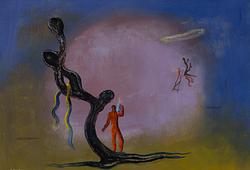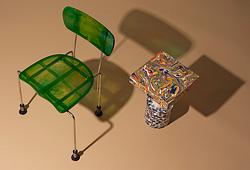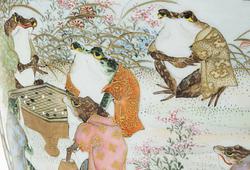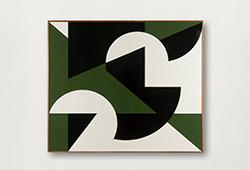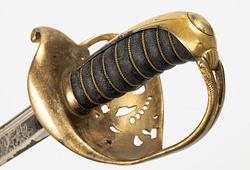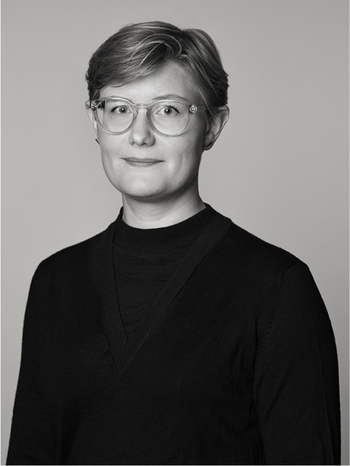Paul Jacoulet
Paul Jacoulet, Fumées de Santal'.
Woodblock print with metal pigments and embossing. Signed in pencil, with the artist's 'Sparrow' stamp. Sheet size 35.7 x 47.5 cm. Ram 41 x 53 cm.
Yellowed to the reverse. Tape residue to the reverse.
Artist
Paul Jacoulet (1902–1960) was a French-born artist who grew up in Japan and became renowned for his exceptional woodblock prints. Combining traditional ukiyo-e techniques with his own innovations, Jacoulet produced prints of remarkable quality—some requiring up to 60 separate blocks.
Born in Paris, Jacoulet moved to Japan at age four, where his father taught at Tokyo University. Despite fragile health, he showed early talent in drawing, music, and languages, becoming fluent in Japanese, French, and English.
In 1920, Jacoulet worked as an interpreter at the French Embassy in Tokyo, immersing himself in Japanese culture through Noh and Kabuki theater. His 1929 travels to the South Seas, Korea, and Manchuria provided abundant inspiration for his later prints, which often depicted expressive portraits. His style evolved from realism before World War II to more colorful and imaginative compositions afterward.
Jacoulet produced his first woodblock print in 1934, collaborating with Japan’s finest engravers and printers to achieve technical perfection. Self-publishing through a subscription model, he ensured his works remained rare and highly collectible. Despite mixed critical reception, Jacoulet’s confidence in his artistic vision secured his reputation as one of the most distinctive Western interpreters of Japanese printmaking.




